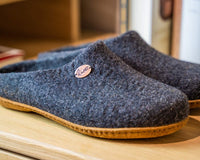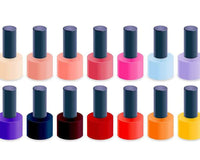Enjoying the summer without unpleasant callus
Summertime is the best time to wear sandals, and get to show off our manicured toes and just enjoy walking around with bare feet. Cracked skin and calluses are therefore extremely unpleasant to have at that time, not only for aesthetic reasons, but also for the overall health. Hydrated (but dry) and soft skin on the feet is also extremely important.
Callus generally refers to thickened and hardened skin that often develops on the feet in response to pressure or friction. When the skin is well hydrated it remains soft and smooth, which increases the resistance against formation of these cracks. With increased age however, there tends to be less fatty tissue in the skin, which means less padding and consequently a higher risk of developing calluses. Another factor linked to higher incidence of calluses are shoes and socks that are too tight or heels that are too high, causing wrong pressure on the foot. Calluses are yellowish or pale in colour. They feel lumpy to the touch, but since the skin is thick, they may be less sensitive to touch compared with the skin around it. They are basically a natural mechanism of protection, as the skin is thickening in order to protect itself.
Callus removal
A person can usually get rid of unwanted calluses at home. It is a good idea to start by soaking the foot in warm water for 10 to 15 minutes. Adding Epsom salts to the bath of water provides antibacterial protection and can help relieve any pain. An alternative to the Epsom salt in the foot soak would be to use normal mouth-wash, and add it to the warm water. Do not let your feet soak for more than 15 minutes as the skin will get too soft, making it harder to identify the affected areas. Once the skin has softened enough, use the callus file or pumice stone to rub off the dead layers of skin presented on top of the affected areas. Another home remedy that will have the same effect is to apply a slice of lemon to the callus and secure it with a bandage. Leave it overnight and the acidity of the lemon will alleviate the discomfort and also reduce the size of the affected cracked skin. Afterwards, you can rub off the dead skin with a homemade scrub, made by simply blending olive oil with sugar or salt and applying it to the skin.
Pumice stones and foot files
Pumice stones are light, porous stones that many people use to exfoliate dead skin and calluses. Once the skin has been softened, use gentle circular or side-to-side motions with the pumice stone to remove dead skin cells. In some cases you may need to exfoliate for several days in a row to get the desired results. A foot file is another tool used for dead skin exfoliation. The file usually has a metal grate and a rubber or plastic handle. There are even electric callus removers that have come into the market recently that are very effective in callus removal. You will literally see dead skin fly off like powder when using the electric callus remover. Do this just enough to smooth the surface of the skin—it’s only intended to remove the excess bulk. However, if you apply the spinning grater too long, you might break the skin, risking bleeding and infections.
Please note: If you suffer from diabetes or similar illnesses please seek medical attention specific to foot care and get special treatments.
How much skin should be removed?
Whether using foot files, electric callus removers or pumice stones, the question remains: when to stop? Only use light pressure and circular motions to remove the outermost layer of dead skin cells. Stop immediately if your skin feels sensitive or sore. Don't rub too much because the freshly pumiced skin may be sensitive. In case you remove too much of the affected skin as response and for protection purposes the body will naturally grow even more calluses. To finish off the home treatment, always massage a moisturizer such as a thick cream or Vitamin E oil into the newly-treated areas to restore moisture to the skin.
How to avoid calluses on the feet
The first step to avoid calluses is to take a look at your shoes as these are the main cause of undesirable dry and thick layers of dead skin. Have both feet professionally measured at the shoe store and buy only properly fitting shoes. Be sure both shoe width and length are correct for each foot since feet may be slightly different sizes. Allow up to a half-inch between your longest toe and the front of the shoe. If you can't wiggle your toes in your shoes, they're too tight.





